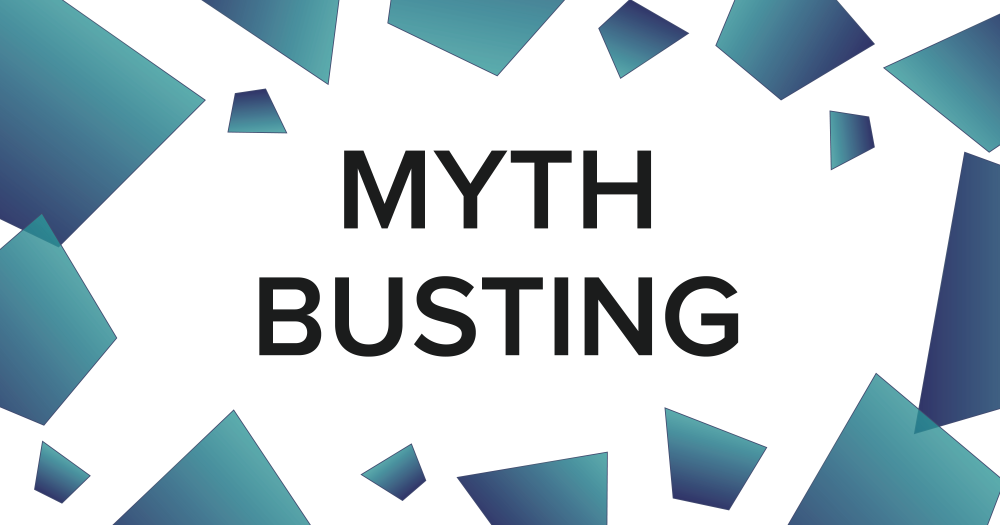Greatest geolocation myths rebutted: does the app have to be opened for geofencing to work?
05 May 2017

MYTH: Geofencing only works when the app is opened
This must be the biggest misconception about geofencing technology. One that’s used again and again by some geofencing antagonists.
They say: A geofence-triggered campaign is only successful for a small number of people who may have a particular app opened at the exact moment they step into a particular area.
FACT: The app does NOT have to be opened for geofencing to work
Geofence-triggered notifications are pushed to the front screen of the phone, just like standard notifications received from apps such as Messenger, News, Instagram — or whatever your guilty pleasure.
The key difference is that geofence-triggered notifications are sent to the phone only if certain complex trigger conditions are met, with location being one of them. Let me explain how this works in a few nerdy sentences. Once a consumer with a geofencing-enabled app on his or her phone approaches a set location, the app sends a GPS signal to servers. This triggers the servers to activate the location-aware campaign and push the message to the front screen of the phone as the consumer enters, dwells or exits the geofenced area. All of this happens regardless of whether the app is opened or not.
Now, here’s where it gets a bit more confusing. We all know the never-ending ‘which is best’ war between the Android and iOS supporters. Well, as much as it hurts me to say (yes, I’m one of those guilt-free iOS users and a blatant admirer of the beauty of Apple’s products) when it comes to app development and particularly location-based tech, Android is winning — big time.
That’s why the delivery of geofence-triggered campaigns differs for Android and iOS phone users. The geofence-triggered campaign will be pushed to every person with a particular geo-enabled app installed on their Android phone. You send out the customer engagement campaign. Your consumers get it when they cross a geofence, whether they just happen to look at their phones or not. Everyone is happy!
Things get a bit more complicated for the iOS crowd, as the geo-enabled app needs to stay in the app switcher menu, so that the system can activate it in the background when a push notification is received or when a person is approaching a geofenced location. That means the user has to open the app at least once since downloading it and cannot force kill the app (i.e. swipe it away when double clicking the home button to access all recently opened apps and websites). If you’re wondering why anyone would keep their apps in the background, here is an article that explains why they should. Last year, both Apple and Google confirmed killing apps actually makes things worse. But that’s a story for another time! Now let’s get back to our geofencing myth-busting.
Although iOS proves to be a bit more difficult than Android in terms of allowing notifications, at no point is the consumer required to have the app opened on the front screen to receive your geofence-triggered campaigns. If a consumer does happen to be inside your app when crossing the geofence, and let’s admit, the probability of that happening is small, then that’s fabulous. The notification will pop up right inside the app.
But geofencing can trigger so much more than the traditional in-app messages. If an app user is simply walking close to your geofenced venue, unaware of what’s going to happen and with his mind buried in the thoughts of everyday life, he will still receive your customer engagement message, survey or content right when and where you want him to receive it. It will appear like any other notification does – by flashing up on his screen to be recalled when he checks his notifications later.
Let’s face it. Those geofences can open up a world of new and very engaging marketing possibilities, whether that’s dynamic geo-targeting, geo-pricing, or geo-conquesting opportunities. Or live real-time customer engagement, with the ability to change campaigns on the fly depending on the reaction…
This post originally appeared on Bubbl News blog.
Want informative summaries of some of the best articles of geolocation technology, digital marketing and customer engagement delivered straight to your inbox? Sign up to “Bubbl Up”, our bi-monthly newsletter. You can also follow us on LinkedIn. Or do both if you want to make us happy :)

Please login to comment.
Comments